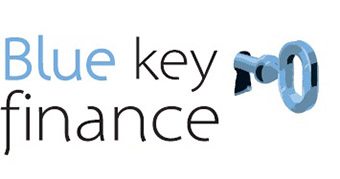How do I unlock equity in order to invest?
Investment property home loans differ from your traditional owner occupied home loans in two main ways;
- The interest that is paid on them is tax deductible
- Investors are not usually focused on paying off the investment loan, whereas home owners are.
With those two factors in mind the perfect structure for investment property home loans has one more variable and that is if there is any existing personal debt on the family home and then determining the appropriate amount to unlock equity.
With this scenario, I am making the assumption that there is a home loan but that there is equity available in the home.
Important to unlock equity
OK, so let’s set some parameters for my example;
The Smith’s own a home in Endeavour Hills, a suburb of Melbourne. The property is valued at $700,000. The Smith’s current outstanding home loan balance is $200,000. The original loan was for $500,000 and they are fortunate that their loan allows them to redraw funds at no cost and they also have the ability to “split” the loan.
For the purpose of this exercise we are going to assume the Smith’s have substantial incomes and will have no problems borrowing up to an additional one million dollars. Furthermore, we are assuming that the Smith’s have an excellent credit history.
The Smith’s have been researching units in the Endeavour Hills area and have found a new 3 bedroom unit for sale with a tenant already occupying the unit on a 12 month lease.
The negotiated price for the unit is $500,000 and the rental payments are $500 per week (5.2% gross rental yield). The purchasing costs will be $30,000 which includes things like stamp duty, legal fees, bank costs etc. The total cost to buy this unit will therefore be $530,000.
Here is the scenario we would put to the Smith’s existing bank. This arrangement or structure will give the Smith’s the following benefits;
- Flexibility to make further investments when they are ready to.
- Maximum tax benefits.
- Assisting in the ongoing reduction of their home loan.
Firstly, we will ask the bank to create a “split” in their existing home loan. What this means is that because the original loan was for $500,000, and currently has a balance owing of $200,000, the Smith’s have an available redraw of $300,000.
We will ask the bank to create a split for $130,000. This figure will cover the costs to buy as mentioned above, as well as the 20% deposit that the bank requires to avoid lender’s mortgage insurance.
So now the Smith’s will have a home loan with total available funds of $300,000 that has been split two ways.
- The original home loan is now “split number 1” of $370,000 and remains as a loan for their home, i.e. Personal use and not tax deductible. This loan will continue to be paid on a principle and interest basis.
- The new “split number 2” of $130,000 is specifically for investment purposes and as such the interest charged will be tax deductible. This loan will be paid as interest only.
The Smith’s will receive two sets of statements which makes it easy for both them and their accountant to calculate the tax deductible interest components.
Secondly, we will apply to their existing bank, or if they are not competitive, another bank, for a new stand alone investment loan for $400,000.
I use this type of structure for my clients as I believe it offers the best overall package at a minimal set up cost. I am always trying to keep your existing relationship in place with your current bank as this means less costs for you.
There are however two exceptions;
- You don’t want to stay. That’s fine with me; after all it is your home loan and not mine.
- Your existing banking arrangements are non-competitive. There are costs involved in refinancing, and sometimes those costs can be so high that even staying with a non-competitive bank (for the time being) will still be the best option. I can only advise on that depending on your personal circumstances.
Here is what we achieved for the Smith’s and their investment property home loans structure;
- They have used $130,000 of the equity that they have in their home to leverage into their first investment property. This then allows a standalone $400,000 interest only investment loan secured against the investment property, thereby, helping to avoid the high cost of lender’s mortgage insurance. A great move towards their financial future.
- They still have available equity in their home to use as leverage for future investments.
- They have maximised the tax deductibility of the funds that they have borrowed.
As you’ve seen from the above example, borrowers can obtain an investment loan for 100%, plus costs in many instances, when prepared to use the equity in their own home as either:
- Supporting or collateral security, or
- To raise additional funds to put towards the investment property purchase.
